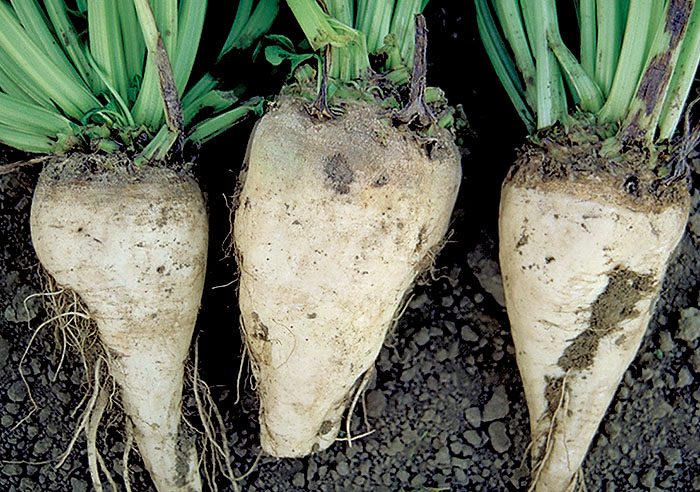A cash crop that’s known for being tricky to no-till may still have potential in a no-till system as a cover crop.
Although it’s still a work in progress, Scott Wohltman, cover crop lead for La Crosse Seed, says the company has been looking at sugarbeets as a cover crop because it can tolerate difficult environments such as saline soils, provide high forage quality and avoid problems with herbicide rotations.
Cash to Cover
There isn’t a lot of information yet about the use or benefits of sugarbeets as covers when compared to more common covers like cereal rye or daikon radish. But there’s plenty of information about sugarbeets as a cash crop, especially in terms of the chemicals that can be used within a rotation, Wohltman says.
“One of the challenges we see is a cover might not meet expectations, or might not get established, because the farmer didn’t take into account the previous herbicide out there,” he says. “There’s a lot of information that’s still not known on how quickly you can plant a radish, turnips or crimson clover after some of these herbicides, because the testing hasn’t been done. With sugarbeets there has been more testing done.”
Because genetically modified sugarbeet traits are also available, it offers no-tillers the possibility of handling weed issues without having to worry about killing off the cover crop.
“Using the technology of Roundup tolerance, my position is that sugarbeets will be more of a player going forward,” Wohltman says. “If you seed sugarbeets early, after wheat or corn silage harvest, you can do a light spraying of Roundup and keep your cover-crop field even cleaner.”
Fit for Forage
The region that Wohltman sees cover-crop potential for sugarbeets is primarily in Minnesota and the Dakotas — the same area where they’re typically grown as a cash crop.
Wohltman knows of growers in that area using sugarbeets as a cover in a couple of ways. The first is as a mix with other species for forage, which is where Wohltman sees sugarbeets gaining a foothold in the cover-crop market.
“I think the fit right now is probably more for foraging the top of the plant,” he says, adding that sugarbeet tops are high in protein and vitamin A, and will “play nicely” with a cereal grain. He’s only seen sugarbeets used in cover-crop mixes but hasn’t heard of growers running into any problems with it.
Another advantage is that sugarbeets can tolerate a variety of environments, from sandy to tight clay soils, and variable soil pH levels, particularly those with higher salt levels. They also grow well in cold temperatures.
Wohltman says that sugarbeets’ contribution to soil health is unknown to some degree at this point. But in 2011, scientists from the U.S. Department of Energy’s Lawrence Berkeley National Laboratory and the Netherlands’ Wageningen University found that sugarbeets “funnel about one-fifth of their photosynthetically captured carbon through their roots in the soil to fuel microbes.”
Termination shouldn’t be a problem because sugarbeets will winterkill, unless they’re used farther south. Wohltman says it’s possible sugarbeets could overwinter south of I-70, as is the case for turnips, but he’s not aware of anyone trying to grow them as a cover that far south.
Timing Establishment
One of the challenges to using sugarbeets as a cover is that they require a longer period to get established.
“Sugarbeets will produce a taproot, and it will get really deep. But for that taproot to really be maximized you need about 60-90 days,” Wohltman says.
Because of this, Wohltman recommends no-tillers seed them after corn silage, seed production or wheat harvest to provide a longer window for establishment. For the first month, sugarbeets need daytime temperatures of 65-80 F, and nighttime temperatures of 40-50 F. Sugarbeets generally produce around 1-2 tons of dry matter, but can reach up to 3-5 tons when given a longer growing period, Wohltman says.
Similar to radishes in seed size, they can be broadcast seeded or drilled, and if a no-tiller wants precision he can use sugarbeet plates on his planter, a practice common with seeding radishes. Wohltman recommends no-tillers seed sugarbeets at a rate of 4-5 pounds per acre with a grass, particularly if they’re aiming for weed suppression and greater biomass.
“If root mass is what you’re going for, they need a little bit more time,” he says. “If just regular forage growth is something you’re looking for, you can seed sugarbeets over several different environments with no problem.”






Post a comment
Report Abusive Comment